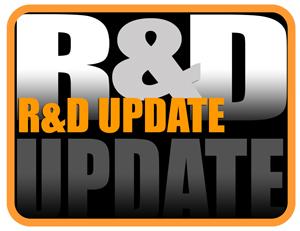This column was prepared by Serhat Kaya and Ajay Yadav, staff of the Center for Precision Forming (CPF, formerly ERC for Net Shape Manufacturing), The Ohio State University, Taylan Altan, professor and director.
Numerous press manufacturers have developed mechanical servomotor gap and straight-side forming presses and press brakes. Servomotor-controlled presses have considerable potential in present and future applications for sheet metal forming, blanking, stamping, and coining.1
Servomotor Mechanics
A servomotor gives a press slide motion flexibility and accuracy in terms of speed, motion, and position control. This flexibility produces infinite slide motion variations that may improve part quality and allow additional operations such as painting and assembly during one press stroke.
Servo presses are available from 35 tons (350 kilonewtons) to 1,000 tons (10,000 kilonewtons). Larger presses for forming large automotive panels currently are being developed. In general, servo presses can be classified based on their drive system (see Figure 1 and Figure 2).
Servo-drive, or free-motion, presses have certain characteristics that can reduce the number of forming operations required, improve tool life, reduce springback, modify stroke position and length, and increase part accuracy.
Flexibility. The most obvious benefit of servo technology is controllable slide motion. This flexibility comes from the ability to program the speed, motion, and slide position in an infinite number of ways with a constant load available throughout the stroke at any speed.
The minimum stroke length can be set to match the forming, stamping, or blanking operation, which provides a shorter cycle time and reduced shock vibrations and noise.2 For example, top and bottom dead center slide positions can be changed to increase the strokes per minute (SPM) when switching from a drawing process to a blanking process.
Figure 3 compares cycle times for a traditional mechanical press and a servo press that can be programmed for the best forming velocity, dwell at a certain stroke position, and performing secondary operations within the same stroke.3
Servo-drive Advantages
Slide Motion. In an automated process, slide slowdown at the top of the stroke would be beneficial because this provides additional time for part transfer. Thus, a multipress transfer line can be run in continuous mode instead of single-stroke mode.
Another significant benefit is the ability for a quick approach, a slowdown to reduce vibrations at impact, and a quick return. The CPF, in cooperation with Aida-America Corp., Dayton, Ohio, conducted slide motion experiments. Figure 4 and Figure 5 show an example slide motion used for elevated-temperature forming of aluminum and magnesium components.4 Using servo presses for specific forming operations will be discussed in the May 2007 issue.
Part Quality. In terms of part quality and tolerances, the ability to match slide motion to a particular forming process, such as deep drawing, blanking, coining, or bending, seems to have a positive effect. For instance, it's well-known that in deep-drawing operations, deformation at a low velocity improves metal flow because of the effect of punch velocity on friction conditions.
Press and Tool Life. The ability to reduce impact speed and variable forming speed can greatly help in reducing press and tool vibrations. Thus, stresses on the tooling and press are reduced, and the life of the equipment is increased.
Accuracy. Figure 2 shows a servomotor press with a link mechanism that obtains the ram stroke by a reciprocating motion. By measuring the position of the slide on the left and right sides with linear sensors, we can control the motion of the two servomotors so that slide parallelism with respect to the bolster is maintained.
In the future we can expect blank holder pressure control to be possible with servomotor-controlled die cushions. Such a system will provide flexibility to program blank holder pressure variation in time and location. Precise blank holder pressure control will lead to higher formability in stamped parts.





































